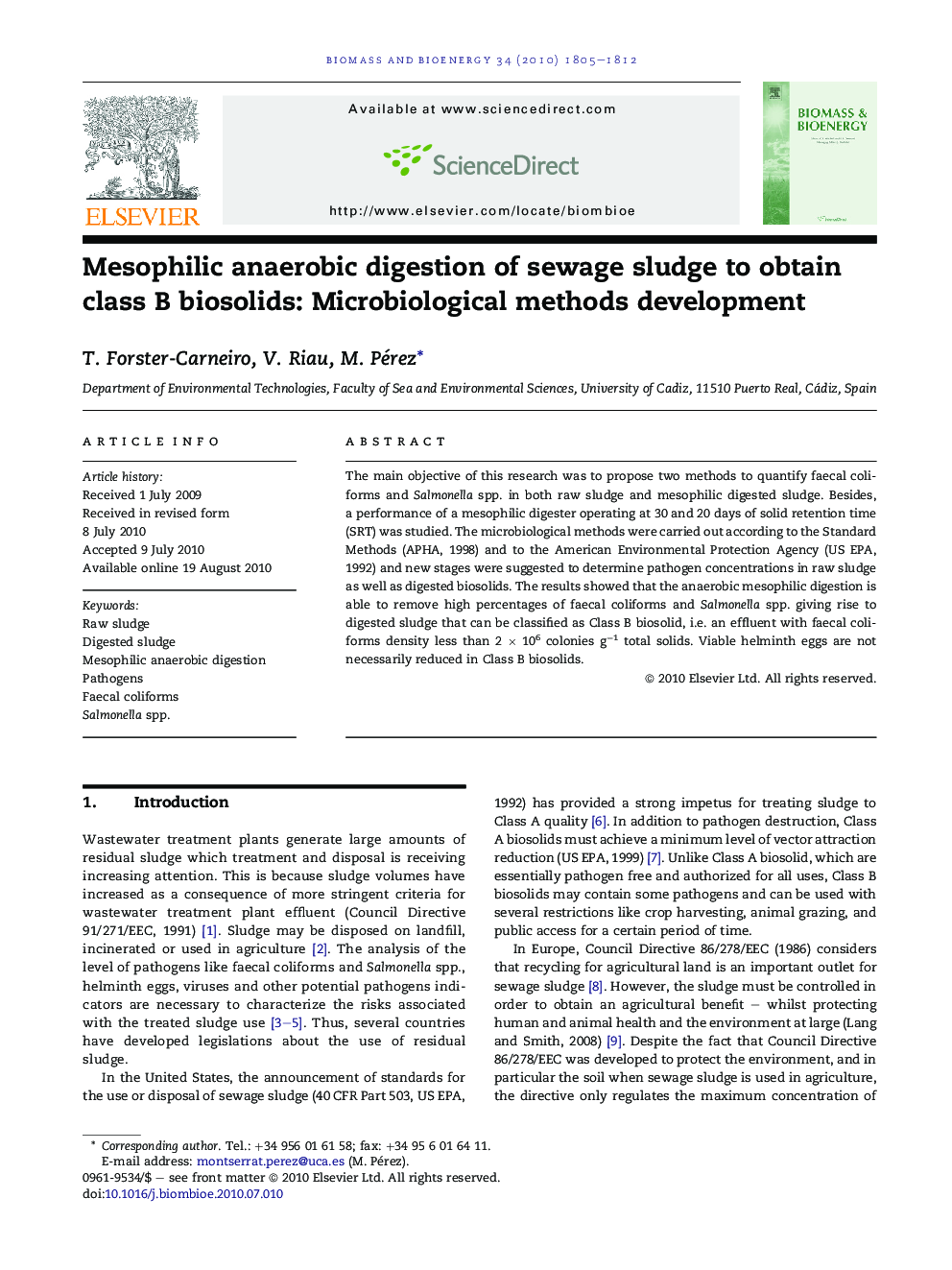| Article ID | Journal | Published Year | Pages | File Type |
|---|---|---|---|---|
| 678227 | Biomass and Bioenergy | 2010 | 8 Pages |
The main objective of this research was to propose two methods to quantify faecal coliforms and Salmonella spp. in both raw sludge and mesophilic digested sludge. Besides, a performance of a mesophilic digester operating at 30 and 20 days of solid retention time (SRT) was studied. The microbiological methods were carried out according to the Standard Methods (APHA, 1998) and to the American Environmental Protection Agency (US EPA, 1992) and new stages were suggested to determine pathogen concentrations in raw sludge as well as digested biosolids. The results showed that the anaerobic mesophilic digestion is able to remove high percentages of faecal coliforms and Salmonella spp. giving rise to digested sludge that can be classified as Class B biosolid, i.e. an effluent with faecal coliforms density less than 2 × 106 colonies g−1 total solids. Viable helminth eggs are not necessarily reduced in Class B biosolids.
